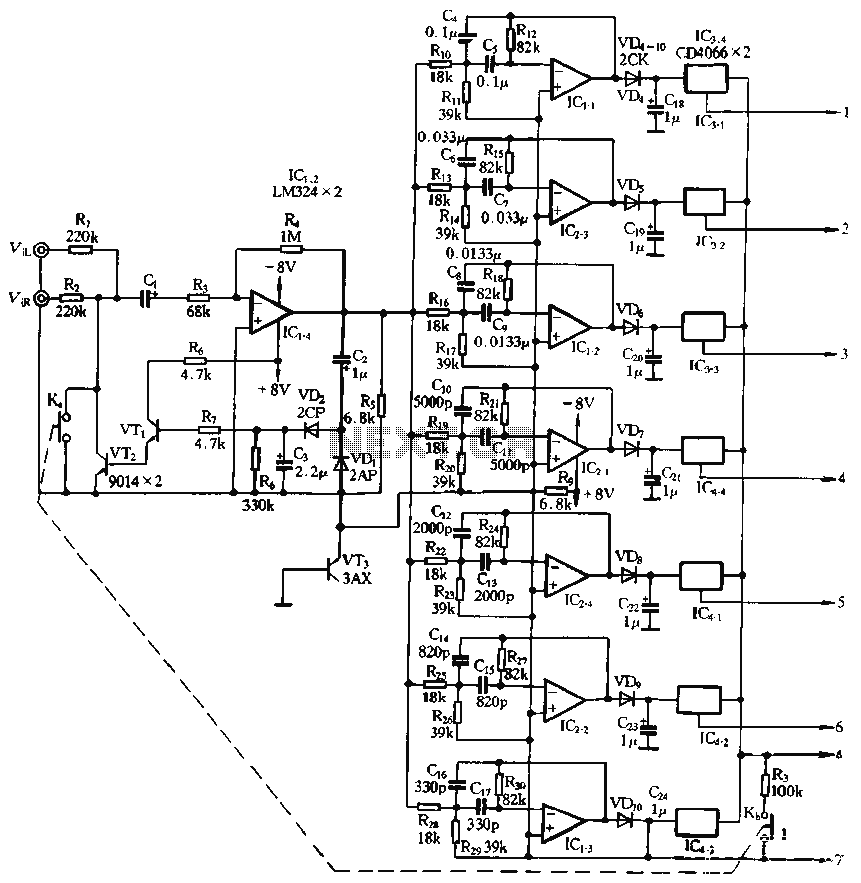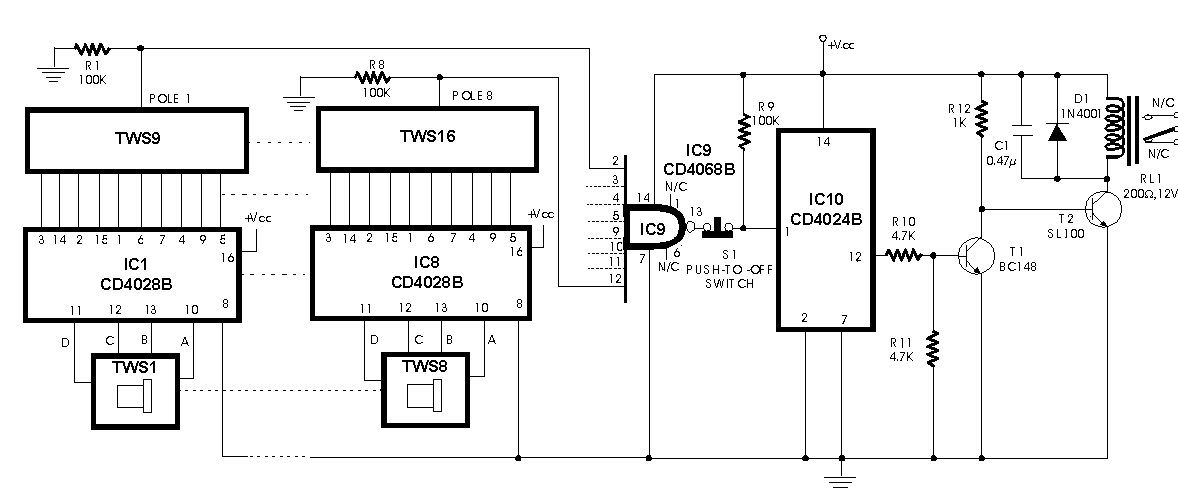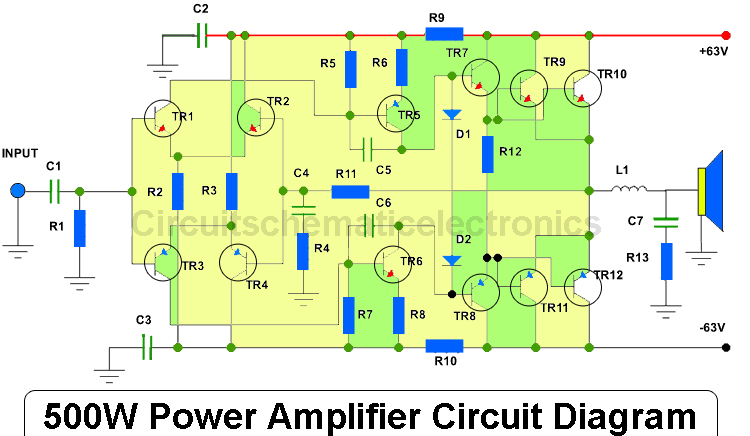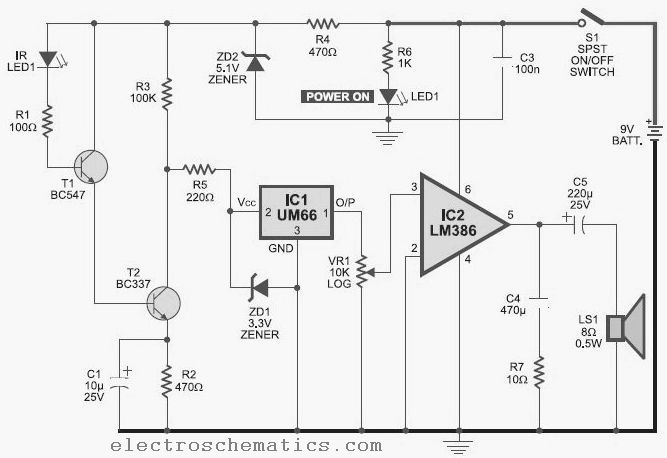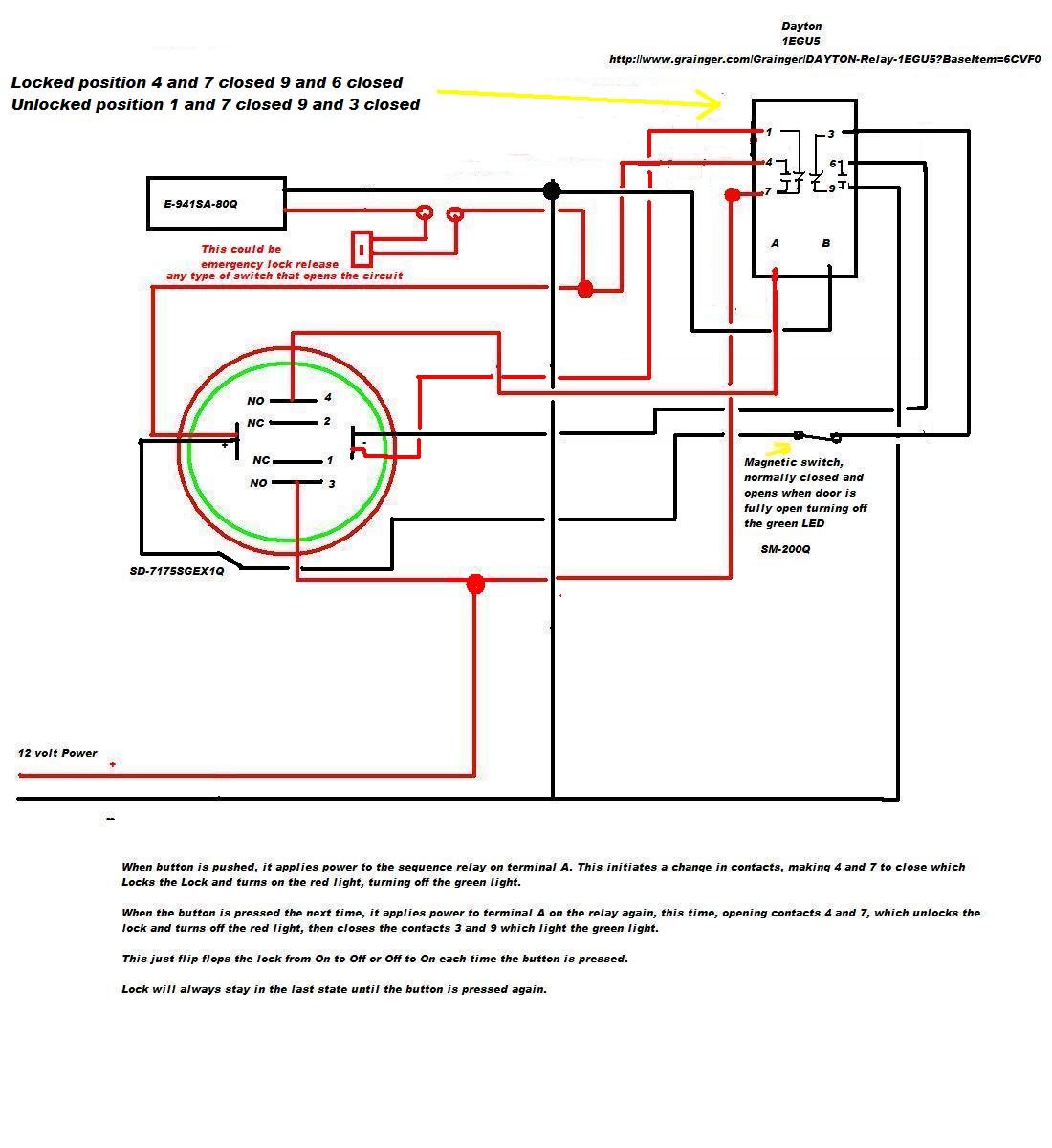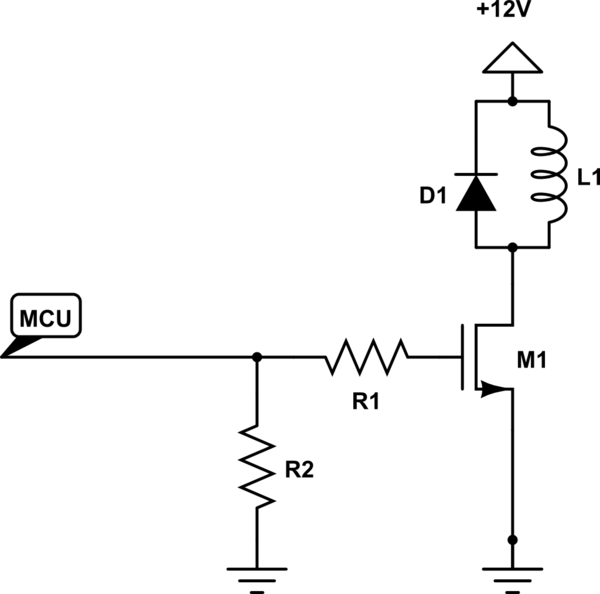
50 Watt Amplifier Circuit Using Transistor

This circuit is a robust and efficient power amplifier suitable for various audio applications. It delivers 60W RMS output at a 50V supply with an 8 Ohm load. The design is user-friendly, allowing for the use of non-critical components that can be easily substituted with nearby values, making it ideal for assembly from readily available electronic components. This amplifier is particularly effective for room audio applications and operates using transistors. The circuit features capacitors C1 and C2, which are responsible for controlling low and high frequencies, respectively. It is fundamentally a Class B amplifier, with the 2N3055 transistors driving the speaker, while additional transistors serve as pre-amplifiers for the driver stage. The maximum power output can be adjusted using a 500 Ohm potentiometer connected to the BC107 transistor. The amplifier is powered by a 50V DC power supply rated for 5A, with the capability to handle supplies up to 60V. It is essential for the power supply to be well-regulated and filtered to minimize noise. Volume control can be implemented by connecting a 10K potentiometer in series with the amplifier's input, although this is not depicted in the circuit diagram. The 500 Ohm potentiometer should be adjusted to achieve optimal performance. All capacitors must be rated above the supply voltage to ensure reliability.
This power amplifier circuit is designed for durability and ease of assembly, making it suitable for both hobbyists and professionals. The Class B configuration allows for efficient operation, minimizing distortion while providing substantial power output. The 2N3055 transistors are known for their high current handling capability and thermal stability, making them ideal for driving speakers in audio applications. The pre-amplifier stage ensures that the input signal is adequately boosted before reaching the driver stage, allowing for better overall performance.
The choice of capacitors in this circuit is critical; C1 is typically a larger value capacitor designed to pass lower frequencies, enhancing bass response, while C2, being smaller, allows higher frequencies to pass through, ensuring clarity in the audio output. The adjustable 500 Ohm potentiometer connected to the BC107 transistor allows for fine-tuning of the amplifier's output power, accommodating various speaker impedances and ensuring compatibility with different audio sources.
The power supply requirements highlight the importance of using a well-regulated and filtered supply to prevent noise interference, which can significantly affect audio quality. The option to use a 10K potentiometer for volume control provides flexibility in adjusting the sound level to suit the listening environment. Overall, this amplifier circuit is a practical solution for achieving high-quality audio amplification in various settings, from home audio systems to small public address systems. Proper assembly and component selection will ensure reliable operation and longevity of the amplifier.It is very rugged and reasonably power amplifier circuit that can be used for any audio applications. The amplifier produces 60W rms at 50V supply on a 8 Ohm load. The circuit is designed such that most of the components are not critical and can be easily replaced by nearest values.
This make it ideal to assemble from your electronics junk box. Th is is a good design for room audio. This circuit is based on transistor for the operation. This is the figure of the circuit. The capacitor C1 controls low frequencies and capacitor C2 controls high frequencies. The circuit is basically a class B amplifier. The transistors 2N 3055 serves the function of driving the speaker. The other transistor functions as pre amplifiers for the driver stage. This is the basic scheme of the circuit. The maximum power level of amplifier can be set by adjusting the 500 Ohm POT connected with the BC107 transistor. The circuit can be powered using a 50 V DC power supply with 5A current rating. Power supply up to 60 V can be given to the circuit. Any way the power supply must be well regulated and filters to avoid noise. Volume control can be attained by connecting a 10 K POT in series to the input of the amplifier, but in the figure is not shown.
Adjust the 500 ohm POT to obtain optimum performance. All capacitors must be rated higher than the supply voltage. 🔗 External reference
This power amplifier circuit is designed for durability and ease of assembly, making it suitable for both hobbyists and professionals. The Class B configuration allows for efficient operation, minimizing distortion while providing substantial power output. The 2N3055 transistors are known for their high current handling capability and thermal stability, making them ideal for driving speakers in audio applications. The pre-amplifier stage ensures that the input signal is adequately boosted before reaching the driver stage, allowing for better overall performance.
The choice of capacitors in this circuit is critical; C1 is typically a larger value capacitor designed to pass lower frequencies, enhancing bass response, while C2, being smaller, allows higher frequencies to pass through, ensuring clarity in the audio output. The adjustable 500 Ohm potentiometer connected to the BC107 transistor allows for fine-tuning of the amplifier's output power, accommodating various speaker impedances and ensuring compatibility with different audio sources.
The power supply requirements highlight the importance of using a well-regulated and filtered supply to prevent noise interference, which can significantly affect audio quality. The option to use a 10K potentiometer for volume control provides flexibility in adjusting the sound level to suit the listening environment. Overall, this amplifier circuit is a practical solution for achieving high-quality audio amplification in various settings, from home audio systems to small public address systems. Proper assembly and component selection will ensure reliable operation and longevity of the amplifier.It is very rugged and reasonably power amplifier circuit that can be used for any audio applications. The amplifier produces 60W rms at 50V supply on a 8 Ohm load. The circuit is designed such that most of the components are not critical and can be easily replaced by nearest values.
This make it ideal to assemble from your electronics junk box. Th is is a good design for room audio. This circuit is based on transistor for the operation. This is the figure of the circuit. The capacitor C1 controls low frequencies and capacitor C2 controls high frequencies. The circuit is basically a class B amplifier. The transistors 2N 3055 serves the function of driving the speaker. The other transistor functions as pre amplifiers for the driver stage. This is the basic scheme of the circuit. The maximum power level of amplifier can be set by adjusting the 500 Ohm POT connected with the BC107 transistor. The circuit can be powered using a 50 V DC power supply with 5A current rating. Power supply up to 60 V can be given to the circuit. Any way the power supply must be well regulated and filters to avoid noise. Volume control can be attained by connecting a 10 K POT in series to the input of the amplifier, but in the figure is not shown.
Adjust the 500 ohm POT to obtain optimum performance. All capacitors must be rated higher than the supply voltage. 🔗 External reference
Warning: include(partials/cookie-banner.php): Failed to open stream: Permission denied in /var/www/html/nextgr/view-circuit.php on line 713
Warning: include(): Failed opening 'partials/cookie-banner.php' for inclusion (include_path='.:/usr/share/php') in /var/www/html/nextgr/view-circuit.php on line 713
